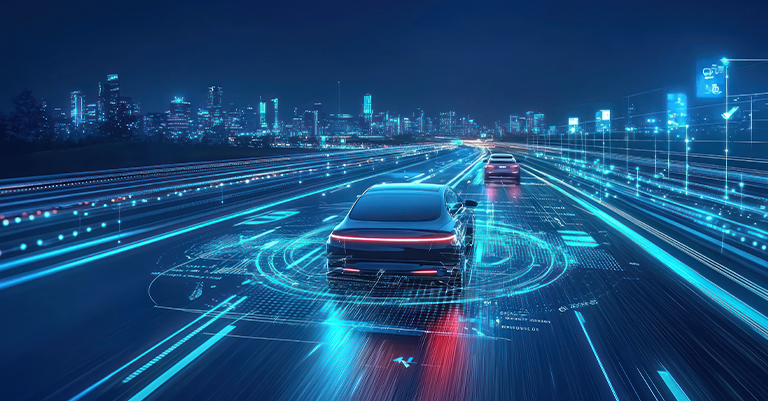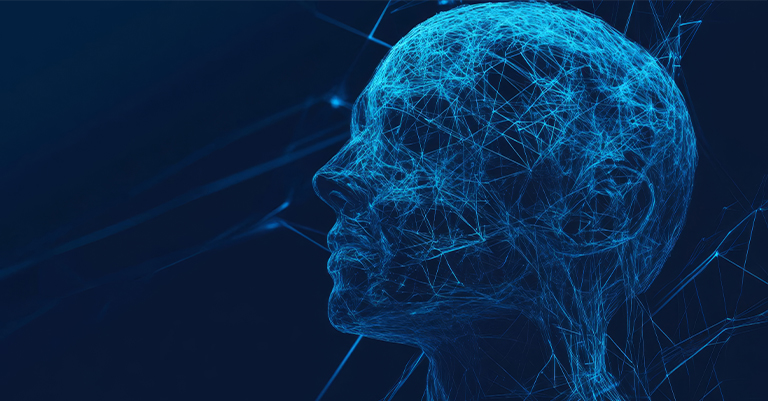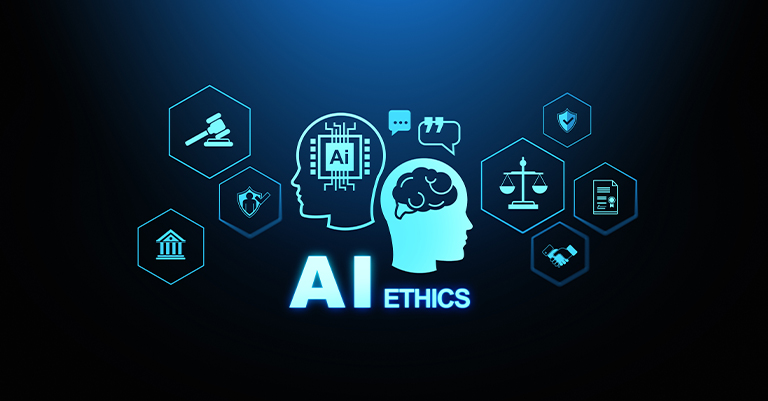Understanding AI Object Detection: Revolutionizing the Way Machines See the World
In recent years, artificial intelligence (AI), specifically computer vision, has advanced a lot. One important use of AI is object detection. This technology helps machines understand pictures and videos. It can find and locate objects accurately. You can see AI object detection in self-driving cars, smart security systems, medical imaging, and retail analytics. This technology changes many industries and creates new ideas. This blog will explain how AI object detection works, its uses, challenges, and what the future has in store.
What Is AI Object Detection?
AI object detection is a way for computers to see and understand pictures or videos. It helps machines find, sort, and locate objects. This is better than just basic image classification. Image classification gives one label to the whole picture. It only tells you what is in the image. Object detection does more. It can find different types of objects and show exactly where they are in the scene. AI object detection uses bounding boxes, which are rectangles that outline each object. For example, if a picture shows cars, a person, and a traffic light, object detection can find and mark each one.
Key Concepts
- Image Classification: This process assigns a single label to an entire image, such as determining if a photo contains a dog or a cat. It does not provide information about where the object is located within the image, nor can it identify multiple objects if they are present.
- Object Localization: Localization takes classification a step further by identifying the location of a specific object within an image. For instance, it might identify that a dog is in the upper right corner of a picture. However, it still focuses on one object per image.
- Object Detection: Object detection combines the strengths of both classification and localization. It identifies all objects within an image and determines their exact locations using bounding boxes. For example, in an image with cars, pedestrians, and bicycles, object detection can detect all of these at once, categorize each, and locate them.
Object detection uses deep learning models like convolutional neural networks (CNNs). These models analyze visual data, recognizing patterns in pixels to distinguish objects. This technology is essential for autonomous vehicles and industrial robots.
How AI Object Detection Works
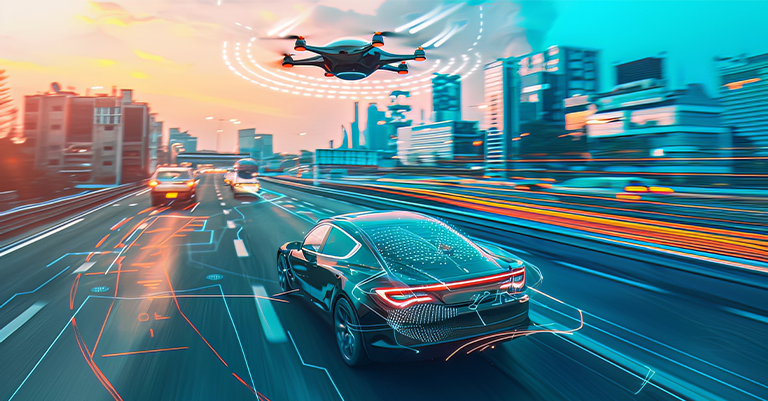
1. Data Preparation: Gathering and Annotating Data
Data preparation is very important for any AI object detection project. It starts with collecting a diverse set of images that show the objects we want to find. The dataset should have different situations, lighting, sizes, and angles to help the model learn well.
After gathering images, we need to label them. This means marking each object and drawing bounding boxes around them. For example, if an image has a car, a person, and a bicycle, we need to put a box around each one. There are tools to help with this, but it can take a lot of time, especially with many images. Accurate labeling is important for the model to learn correctly.
Data preparation may also include data augmentation. This means creating different versions of the images by rotating, flipping, zooming, or changing the lighting. This helps the model learn from many different examples, making it better at handling real-world situations.
2. Choosing the Right Model Architecture
After preparing the data, the next step is picking the right model for object detection. Different models have different speeds, accuracy, and complexity. Some popular models are YOLO, SSD, and Faster R-CNN.
- YOLO (You Only Look Once) is very fast. It works well for real-time applications. YOLO looks at the whole image and divides it into grids. Then, it predicts where objects are in one go.
- SSD (Single Shot Detector) is also fast, but it balances accuracy and speed better. It uses several layers to make predictions at different sizes.
- Faster R-CNN focuses on accuracy. It uses a special part called a Region Proposal Network (RPN) to find where objects are before deciding what they are. This model is great for tasks that need a lot of precision.
Choosing the right model depends on your resources, how complex the task is, and if you need real-time results.
3. Training the Model: Learning from Data

Training takes the most computer power in the object detection process. It helps the model learn to recognize patterns in the data, like shapes, edges, textures, and colors of different objects. To train the model, developers use the labeled dataset and change its settings through a method called backpropagation.
During training, the model tries to guess where objects are and what they are in each image. Then, it compares its guesses to the correct answers, which are the real labels. A loss function measures how different the guesses are from the correct answers. Object detection looks at two types of loss: classification loss (how well the model labels objects) and localization loss (how closely the bounding boxes match where the objects really are).
The model keeps changing its settings to reduce this loss and get better at detecting objects. This training needs powerful GPUs because deep learning models do a lot of complex calculations with large datasets.
4. Evaluating Model Performance
Once the model is trained, it’s important to check how well it works on a validation set. This is a part of the dataset that wasn’t used during training. This step helps make sure the model can work well with new data and hasn’t just memorized the training images.
We use different performance metrics in AI object detection to see how good the model is:
- Mean Average Precision (mAP): This measures how accurate the model is for different types of objects and different thresholds. A high mAP means the model correctly predicts both what the objects are and where they are located.
- Intersection over Union (IoU): IoU checks how much the predicted bounding box overlaps with the real bounding box. It gives a score that shows how closely the predicted box matches the actual object location.
By looking at these metrics, we can decide if the model is ready to be used or if it needs more work, like fine-tuning or using extra data.
5. Prediction (Inference): Making Real-World Decisions
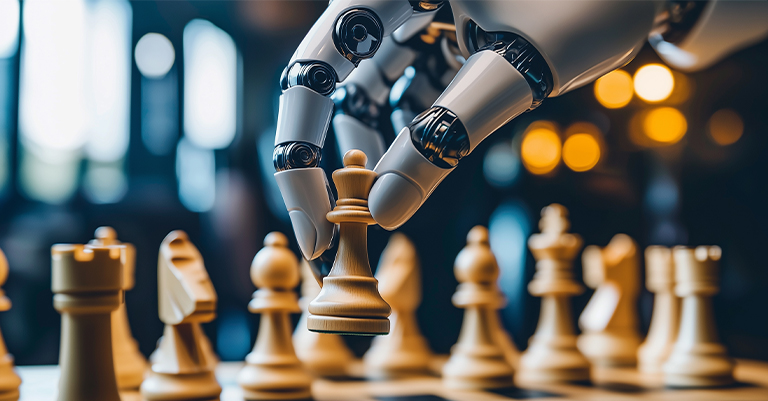
After training and evaluation, the last step is inference. This means using the trained model to make predictions on new data that it hasn’t seen before. During inference, the model looks at images or video frames, finds objects, and draws bounding boxes around them quickly.
Inference can happen in different places, depending on what we need:
- Cloud-based inference: This works well for applications that have stable internet. Here, the model runs on remote servers. It’s great for analyzing a lot of data or handling multiple video feeds.
- Edge-based inference: This means running the model on local devices, like smartphones, IoT devices, or special systems. This method is useful when speed is very important, like in self-driving cars or real-time security systems.
Choosing between cloud and edge deployment depends on things like internet speed, privacy issues, and how quickly we need a response.
6. Continuous Model Improvement
Even after the model is in use, it’s important to keep checking how well it works and to collect new data. Continuous learning helps the model stay updated with new types of objects and changing environments. For example, a self-driving car’s object detection system might need to recognize new vehicles or road signs that weren’t in the original training.
We can do this using transfer learning. This means we take the existing model and train it a bit more with a small set of new data. We don’t have to start from scratch. Continuous improvement helps the model stay accurate and effective as it faces new situations.
Applications of AI Object Detection

AI object detection is a useful technology that works in many industries. It has changed how machines see and understand the world around them. This technology helps machines solve problems that used to need human help. It allows machines to find, sort, and track objects in pictures or videos. Object detection helps with many tasks, like making things easier and helping people make better decisions. Here are some of the most important ways we use AI object detection:
Autonomous Vehicles: Enabling Safer and Smarter Driving
Object detection is very important for self-driving cars. These cars need object detection systems to understand what’s around them and to drive safely. The systems use cameras, radar, and LiDAR sensors to get real-time images of the environment. The AI then looks at this data to find objects like people, other cars, traffic signs, and obstacles.
By spotting and sorting these objects, self-driving cars can decide how fast to go, which way to turn, and when to stop. For example, if the system sees a person crossing the street, it can tell the car to slow down or stop. Recognizing traffic lights and stop signs helps the car follow traffic rules. This ability is very important for advanced self-driving systems, where the car drives itself most of the time without human help.
Smart Surveillance: Enhancing Security and Efficiency

AI object detection is very important for smart surveillance systems. It helps make security more efficient and proactive. Traditional surveillance relies on people to watch video feeds, which can cause mistakes and slow responses. AI-enhanced surveillance systems can automatically find suspicious activities, break-ins, or strange behaviors in real-time. This means they don’t need constant human watching.
For example, object detection can spot people going into restricted areas or unattended bags in busy places like airports. This helps security staff react quickly to possible threats. Object detection can also recognize specific people or license plates. This is useful for facial recognition and automated license plate recognition (ALPR). These features make object detection very helpful in places like airports, banks, shopping centers, and public transportation stations.
Healthcare and Medical Imaging: Improving Diagnosis and Patient Care
In healthcare, object detection is a very important tool in medical imaging. It helps doctors diagnose problems more accurately. For example, in radiology, object detection finds issues in X-rays, CT scans, or MRIs, like tumors or broken bones. By automating these detections, AI lets radiologists focus on the most critical cases, reducing mistakes and helping patients more.
One use of this technology is in mammography, where object detection looks for early signs of breast cancer, like tiny calcium deposits and lumps. In lung scans, AI can find nodules that might mean lung cancer, allowing for early treatment. This technology is also used in eye exams to diagnose diabetic retinopathy by spotting small changes in the retina.
These advancements help speed up diagnoses and support telemedicine, which allows doctors to analyze images remotely. AI object detection helps provide high-quality care to patients in remote areas, making healthcare more accessible.
Retail Analytics: Enhancing Customer Experience and Optimizing Operations

In retail, object detection is changing how businesses understand their customers and run their stores. AI-powered retail analytics helps businesses see how customers interact with products and where they move around the store. For example, object detection can create heatmaps that show which areas are busy. This helps store managers decide where to put products for better sales.
Object detection also helps with managing inventory. Cameras with detection models can watch the shelves and tell staff when products are running low or out of stock. This reduces the need for manual checks and keeps the shelves full, making customers happier.
In e-commerce, object detection enables virtual try-ons. This lets customers see how clothes or accessories will look on them using augmented reality. By detecting body parts or facial features, the AI can adjust the virtual products, giving customers a more personalized shopping experience.
Agriculture and Environmental Monitoring: Promoting Sustainable Practices
Object detection has a big impact on farming and protecting the environment. In agriculture, drones with object detection can fly over fields and check how crops are doing. This helps farmers find problems like pests, nutrient shortages, or diseases early so they can fix them quickly.
For example, if a farmer spots unhealthy crops, they can apply fertilizers or pesticides only in those areas. This saves resources and helps the environment. Object detection also helps farmers keep track of their livestock, watching their movements and finding injured or sick animals.
In environmental monitoring, object detection helps track wildlife populations and learn about their behavior. Cameras placed in natural habitats can identify and count animals, even in tough conditions. This information helps conservationists understand where animals live and make plans to protect endangered species. AI can also help find poachers, stopping illegal hunting.
Industrial Automation: Streamlining Manufacturing and Quality Control

Object detection is very important in industrial automation. Factories and manufacturing plants use it to automate quality control and tasks on assembly lines. AI-powered cameras can check products as they move along the production line. They can find defects, misaligned parts, or missing pieces in real-time. This helps ensure that only good products go to market, reducing waste and making the process more efficient.
For example, in the car industry, object detection can spot defects in car parts, like cracks, dents, or scratches. It also helps make sure that parts are in the right place during assembly, which cuts down on the need for people to check everything. This level of precision makes products better and speeds up production.
Additionally, robotic arms in factories use object detection to find and handle parts. By recognizing the shape, size, and position of objects, robots can do complex tasks like sorting, picking up, and assembling parts all by themselves.
Sports Analytics: Improving Performance and Fan Engagement
In sports analytics, object detection helps track players, the ball, and other things during live games. This information gives insights into how players move, team strategies, and how the game is going. Coaches use these insights to improve training, plan for games, and boost player performance.
For fans, object detection makes watching games more exciting by providing real-time analysis and stats. For example, it can track how fast a soccer ball is moving and its path or highlight important moments like goals and fouls. This makes the game more fun and interactive for everyone watching.
Logistics and Transportation: Optimizing Flow and Safety
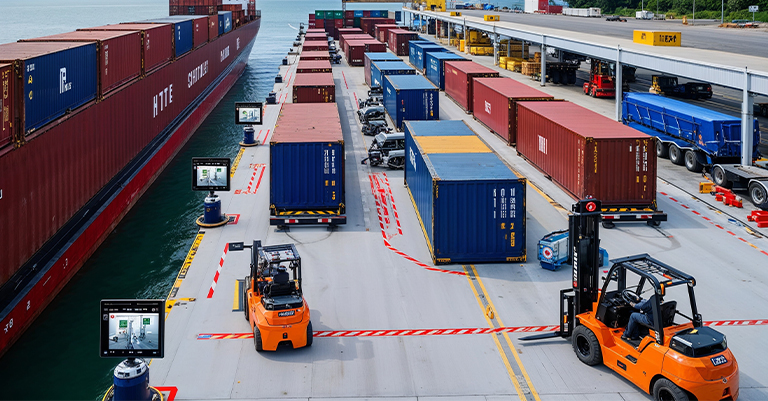
In logistics and transportation, object detection helps manage complex tasks like sorting packages, monitoring traffic, and automating warehouses. For example, in warehouses, object detection can automatically sort packages by reading barcodes or recognizing product shapes. This speeds up shipping and reduces mistakes.
In traffic management, object detection can watch the roads to find traffic jams, accidents, or rule violations. This information can help change traffic lights, alert emergency services, or give real-time updates to drivers. It also helps autonomous drones and delivery robots navigate safely through cities by spotting obstacles and changing their paths as needed.
Challenges in AI Object Detection
While AI object detection has many benefits, like making tough tasks easier and helping with decision-making, it also has some big challenges. These problems need to be solved to make sure the solutions are reliable and can be used everywhere. Here are some of the most important challenges:
Data Requirements
Object detection models need large and well-labeled datasets to work accurately. The quality and amount of data affect how well a model can find objects in different situations. For general tasks, big datasets like COCO (Common Objects in Context) or ImageNet are used. However, for special tasks, like spotting rare animals in wildlife or certain types of machines, those datasets might not exist.
Making these special datasets means collecting images and manually labeling them by drawing boxes around each object. This takes a lot of time and effort. It’s also very important to make sure the labels are correct, because even small mistakes can hurt the model’s performance. The high cost and time needed for preparing data can be a big problem, especially for startups and research groups with limited resources.
Also, many applications need data that shows different lighting, weather, and backgrounds to help the model learn well. This can be tough, especially in outdoor settings, where seasonal changes can make objects look very different.
Model Complexity
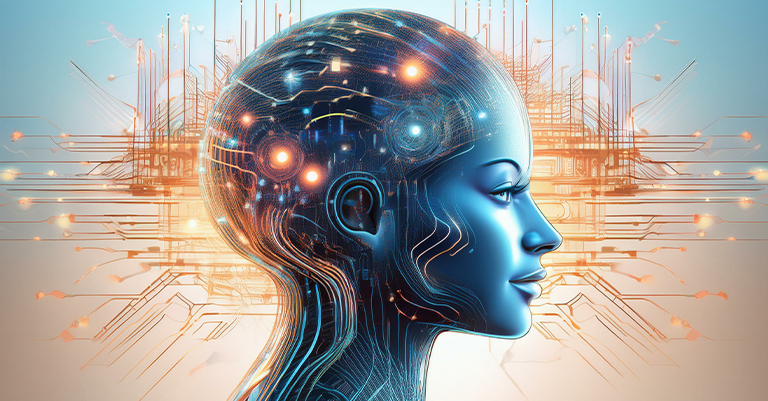
Deep learning models for object detection, like Faster R-CNN and Mask R-CNN, are very complex. They have layers of convolutional networks, region proposal networks (RPNs), and bounding box regressors, all of which need careful tuning. This complexity helps them be very accurate, but it also requires a lot of computing power.
Training these models needs powerful GPUs or TPUs to handle the heavy calculations involved in processing images. For smaller companies or research groups, the cost of this hardware can be very high. Plus, tuning the hyperparameters, which helps improve performance, can make training take even longer.
Even after training, using these models can be hard. Running complex models on devices like cameras or drones needs a lot of simplification, which might lower their accuracy. Finding a way to make a lighter model for these devices while keeping it accurate is still a big challenge.
Real-Time Performance
Real-time object detection is very important for many uses, like self-driving cars, drones, and security systems. In these cases, delays in spotting objects can lead to serious problems or safety risks. For example, if a self-driving car doesn’t see a pedestrian in time to stop, it could cause an accident. To work in real time, models need to process video frames quickly without losing accuracy.
Models like YOLO (You Only Look Once) and SSD (Single Shot Detector) are made to solve this problem by focusing on speed. YOLO, for example, looks at the whole image in one go, making it much faster than methods like Faster R-CNN, which take more time. However, the downside is that these faster models might not be as good at finding small objects or handling crowded scenes.
To make real-time performance even better, researchers use techniques like model quantization (which reduces the detail of the model’s weights) and pruning (which removes less important parts of the model). These methods help make the detection faster but might lower accuracy a little bit. Finding the right balance is very important, especially in cases where even a small drop in accuracy can lead to big problems.
Handling Occlusion and Variability
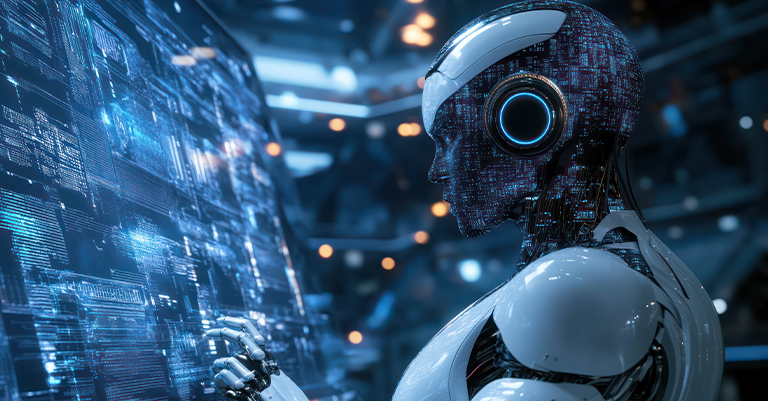
In real-world environments, objects can be partially hidden or may look different in shape, size, and direction. For example, on a busy city street, pedestrians might be blocked by parked cars, or vehicles might be seen from odd angles. This variability makes it hard for object detection models to work well.
To handle occlusion, models need to figure out that an object is there, even if only part of it is visible. Some researchers use information from the surrounding scene to help detect these hidden objects. For instance, if part of a car is blocked, the model can guess the rest of the car’s shape by looking at the visible parts and knowing what cars usually look like.
Another challenge is scale variation, where objects look different sizes because they are closer or farther from the camera. This is especially important for things like drone surveillance, where people or vehicles can appear very different in size based on the drone’s height. Techniques like feature pyramid networks (FPNs) help models recognize objects at different sizes, but they make the model more complicated and require more computing power.
Bias and Fairness
Bias in training data can lead to unfair detection results, which is a big worry in areas like law enforcement, surveillance, and healthcare. For example, a surveillance system that mostly learns from urban environments might not work well in rural areas. It could miss objects like animals or certain types of vehicles that weren’t in its training data. This can create biased performance that favors the places and people in the training data.
Another important issue is demographic bias, especially in facial recognition. If a model is trained on images mostly showing one race, gender, or age group, it might not be good at detecting or recognizing faces from other groups. This can lead to unfair treatment or mistakes in areas like public safety.
To fix bias, it’s important to make training datasets more diverse. This means including a wide range of scenarios, environments, and different demographic groups. Researchers are also developing ways to check AI models for bias, making sure they follow ethical standards before being used. Creating fair and unbiased models is very important to keep public trust in AI systems, especially when they are used in public places or for important regulations.
Interpretability and Explainability

One challenge of object detection that isn’t talked about much is interpretability. This means understanding how the model makes its decisions. Deep learning models are often seen as black boxes because they process data in ways that are hard for people to understand. This lack of clarity can be a problem, especially in important areas like self-driving cars or medical imaging.
For example, if a self-driving car doesn’t see a pedestrian, it’s very important to know why that mistake happened so it doesn’t happen again. However, figuring out how a deep learning model decides can be really tough. Explainable AI (XAI) techniques, like visual saliency maps, can help by showing which parts of an image the model paid attention to when making its decision. But these methods are still being developed and have some limits.
Making object detection models easier to understand can help build trust with users and stakeholders, making sure that AI systems are reliable and clear. It also helps developers troubleshoot problems when they happen, allowing them to improve their models over time.
These challenges show how complex it is to create and use AI object detection systems. Addressing issues like data needs, how much computing power is required, and fairness is important for making object detection more reliable and easy to use. As research in AI continues to grow, new solutions to these problems are being found, which could lead to better and more widely usable object detection technologies. However, overcoming these challenges will still be a major focus for researchers and developers who want to maximize the potential of object detection in real life.
The Future of AI Object Detection

The future of AI object detection looks promising. Continuous improvements in algorithms, hardware, and techniques are opening up new possibilities. As researchers and engineers work on the challenges in this area, new trends are starting to appear. These trends promise to make object detection more accurate, efficient, and flexible. Here are some key trends that are likely to shape the future of AI object detection:
1. Edge AI and On-Device Detection
Edge AI means running AI models directly on local devices like smartphones, drones, smart cameras, and IoT sensors instead of using cloud servers. This change has several benefits, like faster response times, better privacy, and less need for internet data. By processing data locally, edge AI avoids sending large amounts of image data to remote servers, which is very important for real-time uses like self-driving cars or smart security systems.
As technology improves, devices with special AI chips, like Google’s Edge TPU or NVIDIA Jetson, can run complex object detection models more easily. These chips are made to handle the heavy demands of deep learning tasks while using less power, making them great for battery-powered devices like drones.
For example, a drone with an edge AI object detection model can look at aerial footage in real time, spotting obstacles or checking crops without needing a constant internet connection. This not only makes the drone work better but also makes it more reliable in remote areas where the internet may not be available.
The mix of edge computing and AI creates new opportunities for smart cities, factory automation, and consumer electronics. As this trend grows, we can expect object detection models to become lighter, use less power, and still provide high accuracy without needing outside computing resources.
2. Zero-Shot Learning and Transfer Learning
One ongoing challenge in AI object detection is the need for a lot of labeled datasets. Traditional models usually need thousands or even millions of annotated images to work well. However, new techniques like transfer learning and zero-shot learning are changing this. These methods help models learn and make good guesses even with very little training data.
Transfer Learning
This process involves using a pre-trained model that has already learned to recognize common features. Then, we can fine-tune it on a smaller, specific dataset for a particular task. For example, a model that was pre-trained on a dataset like ImageNet can be adjusted to find specific types of machines in a factory. This greatly reduces the time and amount of data needed for training, making it easier to create custom object detection solutions.
Zero-Shot Learning
Zero-shot learning takes things even further by allowing models to recognize new objects they haven’t seen before, based on their descriptions. It helps a model understand how known and unknown categories relate to each other without having direct training on the new objects. For example, if a model has learned to detect cats and dogs, zero-shot learning can help it identify wolves because it knows that wolves are similar to dogs, even if it hasn’t been trained with pictures of wolves.
These techniques are especially useful in places where new objects show up often or in specialized areas like wildlife monitoring, where it’s hard to gather enough training data for rare species. They also make object detection easier for industries and applications that have limited data, allowing for faster use and flexibility.
3. 3D Object Detection
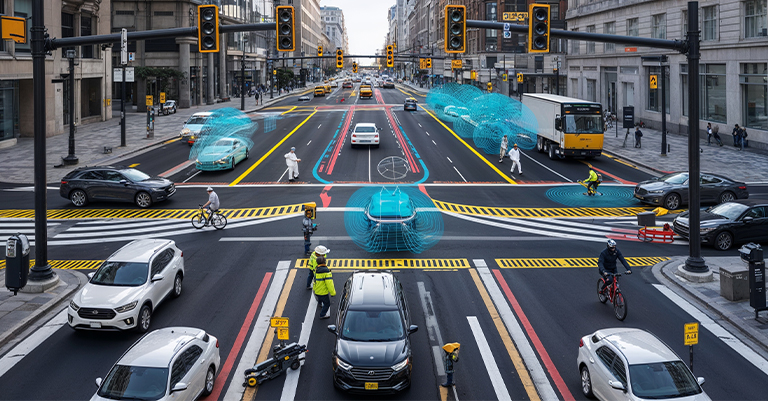
As AI systems get better, 3D object detection is becoming more important, especially in areas like self-driving cars, robots, and augmented reality (AR). Unlike traditional 2D object detection, which finds objects in flat images, 3D object detection understands the depth and space between objects in a three-dimensional area. This gives a more realistic view of the environment, which is very important for safe navigation and interaction.
- LiDAR (Light Detection and Ranging) sensors and stereo cameras are often used to collect 3D data. They provide depth information along with regular images. For example, in self-driving cars, 3D object detection helps the car understand how far away other cars, people, and obstacles are. This makes it possible for the car to safely navigate through complex environments.
- In AR applications, 3D object detection lets virtual objects be placed accurately and interact with real-world objects. For instance, an AR app could put a virtual chair in a room, making sure it sits correctly on the floor and works well with the furniture around it. This makes using the app feel more immersive and natural.
3D object detection can also help robots understand how objects are arranged in space so they can handle them properly. For example, a robot in a warehouse can use 3D detection to pick up objects from shelves or move through cluttered areas. As sensors become cheaper and computers get more powerful, 3D object detection is expected to be a standard part of many AI systems.
4. Combining Object Detection with NLP
The combination of natural language processing (NLP) and object detection is creating multimodal AI systems that can understand both visual and text information. This mix makes it easier for people to interact with machines using natural language commands.
For example, in a home automation system, a user could say, “Show me the video of the cat in the living room.” The AI could then use object detection to find the cat in the video and show the right footage. Similarly, a robotic helper in a warehouse could be told to “Pick up the red box on the top shelf.” The robot would use object detection to spot the box and NLP to understand the command.
This combination is also useful for things like image captioning and visual question answering (VQA). In these cases, the AI needs to create natural language descriptions of images or answer questions about what it sees. For instance, a VQA system might be asked, “How many people are standing in the park?” It would need to use object detection to count the people and NLP to understand the question and give an answer.
Multimodal AI systems have great potential in areas like healthcare, customer service, and interactive entertainment, where users can benefit from talking to AI in more natural ways. This trend suggests a future where AI systems can easily mix vision and language, making them more versatile and user-friendly.
5. Self-Supervised Learning and Semi-Supervised Learning
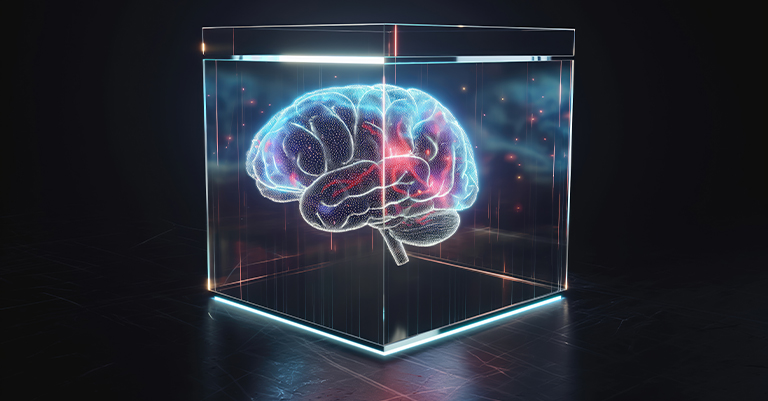
As the need for efficient object detection models increases, self-supervised learning and semi-supervised learning are becoming good options instead of fully supervised training. These methods try to lower the need for labeled data by allowing models to learn from unlabeled data or datasets that are only partly labeled.
Self-Supervised Learning
In self-supervised learning, the model learns to create its own labels by finding relationships within the data. For example, the model might learn to guess missing parts of an image or figure out where objects are in relation to each other. These tasks help the model understand visual structures better without needing a lot of manual labeling.
Semi-Supervised Learning
Semi-supervised learning uses a small amount of labeled data along with a large amount of unlabeled data. This is especially helpful in cases where getting labeled data is hard or costly. For example, a model could start with a few labeled images of a rare species and then use many unlabeled images to get better at detecting that species.
These methods make it possible to create high-performing object detection models in areas where labeled data is hard to find, like remote sensing and medical imaging. By reducing the need for people to label data, self-supervised and semi-supervised learning can lower development costs and speed up how quickly models are used.
6. Ethical AI and Bias Mitigation
As AI object detection keeps improving, there is a bigger focus on ethical AI and reducing bias. It’s very important to make sure object detection models are fair and don’t have any hidden biases, especially when used in sensitive areas like surveillance, healthcare, and law enforcement.
Researchers are looking for ways to check and adjust object detection models to make them fairer. This means analyzing how well models work for different groups of people and finding biases in the training data. Techniques like adversarial training and data augmentation can help reduce bias by making sure models see a variety of examples while they learn.
The focus on explainable AI (XAI) is also growing. Explainable AI tries to make object detection models clearer by showing how they make their decisions. For example, saliency maps can highlight which parts of an image the model looked at when making a guess. This transparency is important for building trust in AI systems, especially when they are used for important decisions.
Ethical AI practices will be crucial in shaping the future of object detection. They ensure that as the technology becomes more powerful, it also remains responsible and inclusive.
These trends show the exciting future of AI object detection. By using advancements in edge computing, self-supervised learning, and 3D analysis, the next generation of object detection models will be more adaptable, efficient, and able to handle real-world problems. As the field keeps evolving, it has the potential to bring innovations across different industries, making AI more accessible and impactful than ever before.
Conclusion
AI object detection is changing how machines see and interact with the world. It helps power self-driving cars, improve medical diagnoses, and enhance retail analytics by enabling accurate identification and understanding of objects in complex settings. This technology is very important for automation and smart decision-making in many industries.
However, challenges still exist, such as needing large, labeled datasets, high computing power, and dealing with issues of bias and fairness. Real-time performance is especially important in areas like self-driving cars and surveillance, which require a balance between speed and accuracy.
The future of AI object detection looks bright. Edge computing allows for real-time detection on devices like smartphones and drones, reducing the need to depend on cloud servers. Techniques like transfer learning and zero-shot learning help lower the need for a lot of data, making it easier for more people to use this technology. Advances in 3D object detection and combining it with natural language processing (NLP) open up new possibilities for interactive and immersive experiences.
As AI object detection continues to develop, it will keep creating new opportunities across industries, driving innovation and automation. Understanding its potential is important for anyone who wants to stay ahead in AI development, helping shape a future where machines can easily understand and interact with the physical world.


